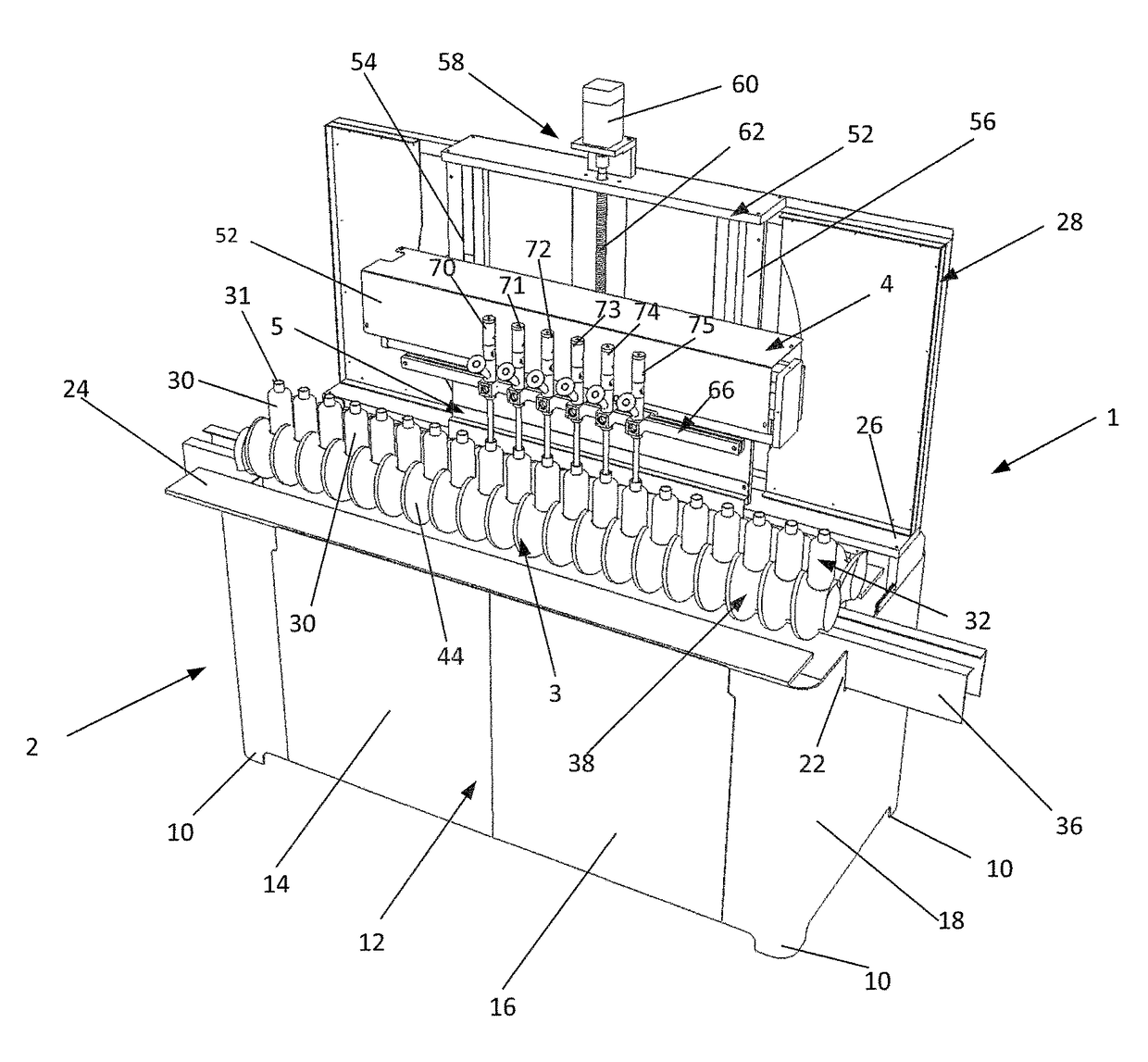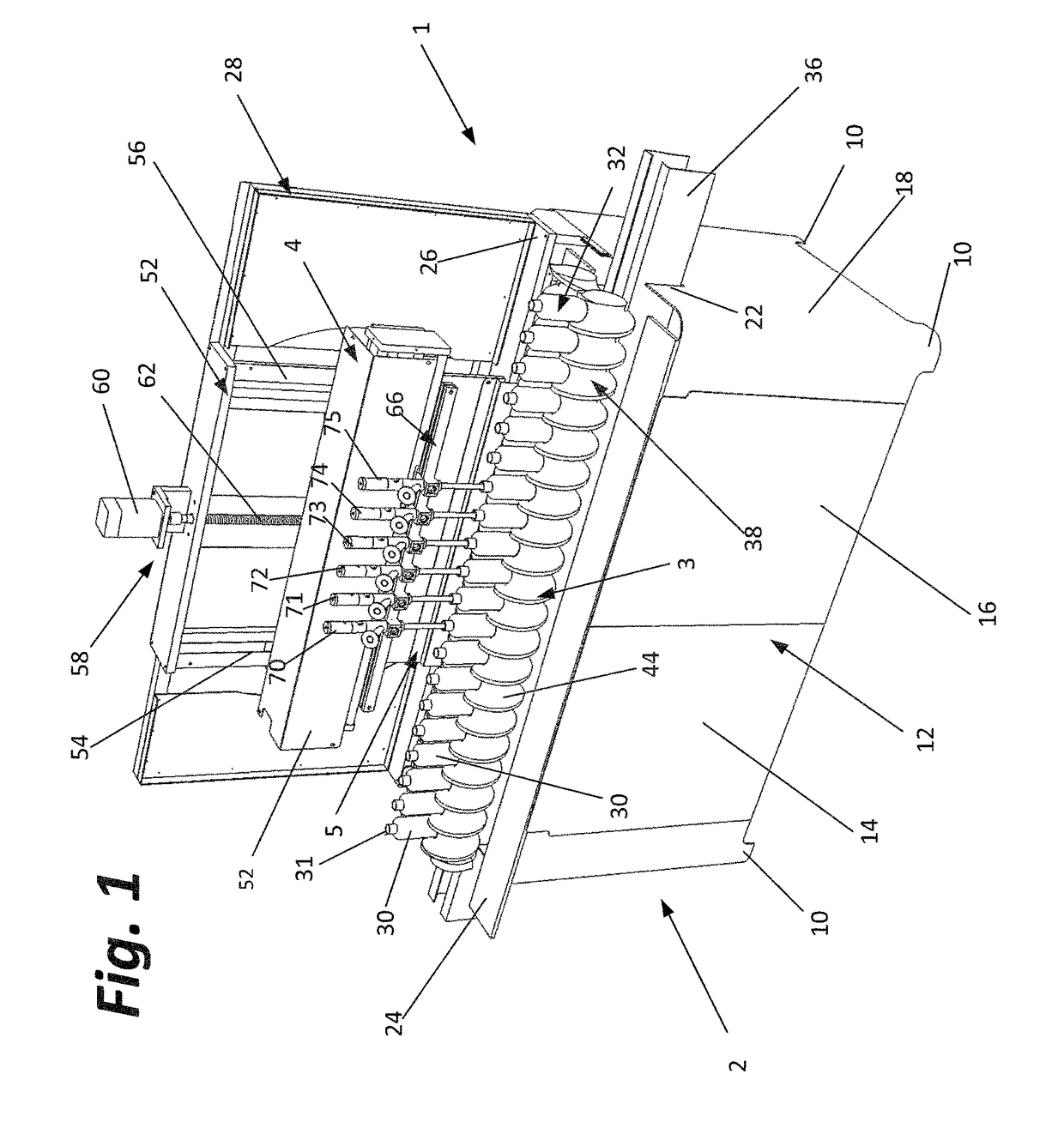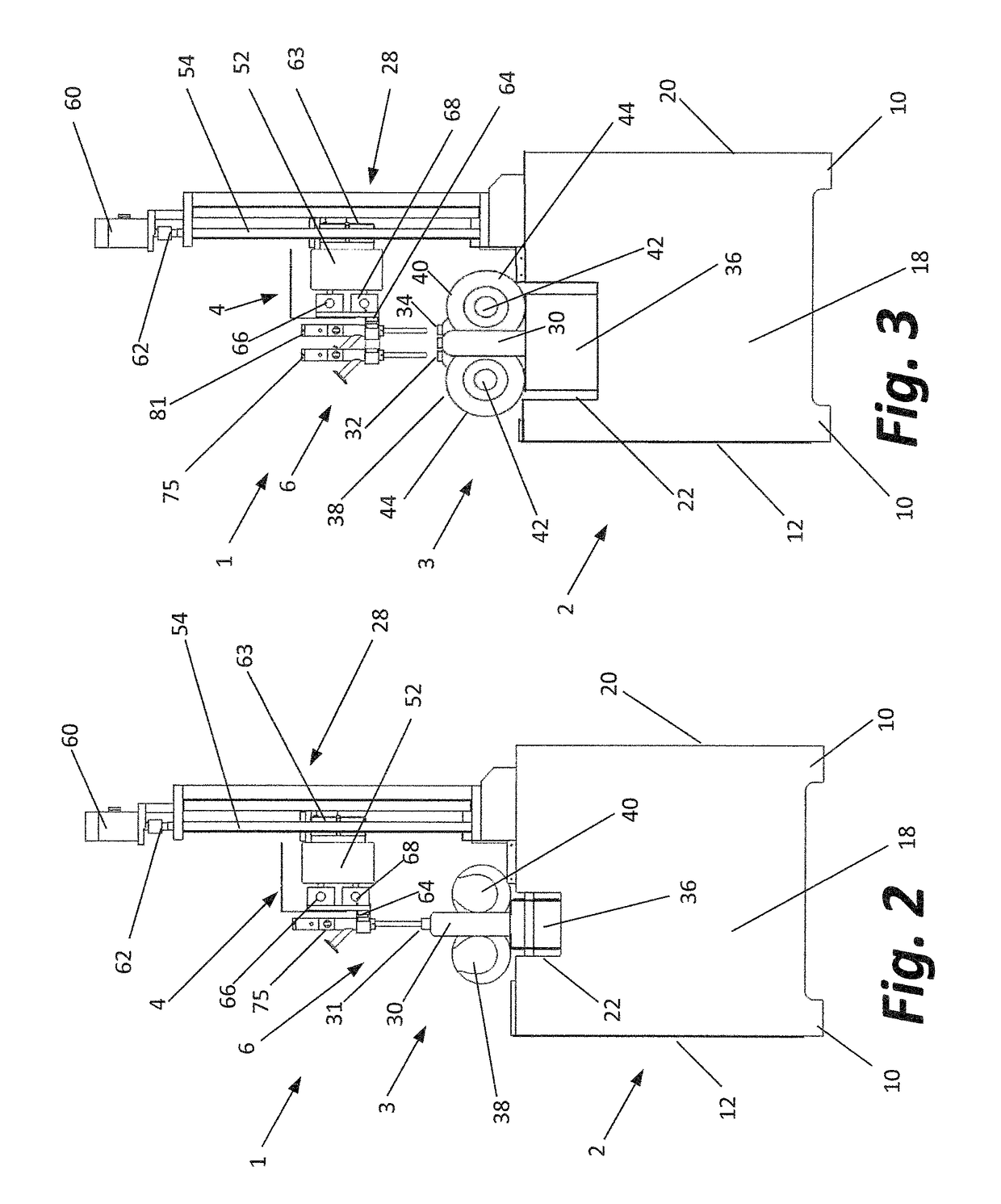Continuous motion linear container filler
a container and moving technology, applied in the direction of liquid handling, packaging goods type, transportation and packaging, etc., can solve the problems of not being able to fill bottles as fast, affecting the efficiency of container filling, so as to maximize the rate at which containers are filled
- Summary
- Abstract
- Description
- Claims
- Application Information
AI Technical Summary
Benefits of technology
Problems solved by technology
Method used
Image
Examples
Embodiment Construction
[0034]In the following detailed description, reference is made to various exemplary embodiments in which the invention may be practiced. These embodiments are described with sufficient detail to enable those skilled in the art to practice the invention, and it is understood that other embodiments may be employed, and that structural and other changes may be made without departing from the spirit or scope of the present invention.
[0035]This description of the preferred embodiment is intended to be read in connection with the accompanying drawings, which are to be considered part of the entire written description of this invention. In the description, relative terms such as “lower”, “upper”, “horizontal”, “vertical”, “above”, “below”, “up”, “down”, “top” and “bottom”, “under”, as well as derivatives thereof (e.g., “horizontally”, “downwardly”, “upwardly”, “underside”, etc.) should be construed to refer to the orientation as then described or as shown in the drawings under discussion. ...
PUM
| Property | Measurement | Unit |
|---|---|---|
| speed | aaaaa | aaaaa |
| distance | aaaaa | aaaaa |
| constant speed | aaaaa | aaaaa |
Abstract
Description
Claims
Application Information
 Login to View More
Login to View More - R&D
- Intellectual Property
- Life Sciences
- Materials
- Tech Scout
- Unparalleled Data Quality
- Higher Quality Content
- 60% Fewer Hallucinations
Browse by: Latest US Patents, China's latest patents, Technical Efficacy Thesaurus, Application Domain, Technology Topic, Popular Technical Reports.
© 2025 PatSnap. All rights reserved.Legal|Privacy policy|Modern Slavery Act Transparency Statement|Sitemap|About US| Contact US: help@patsnap.com



